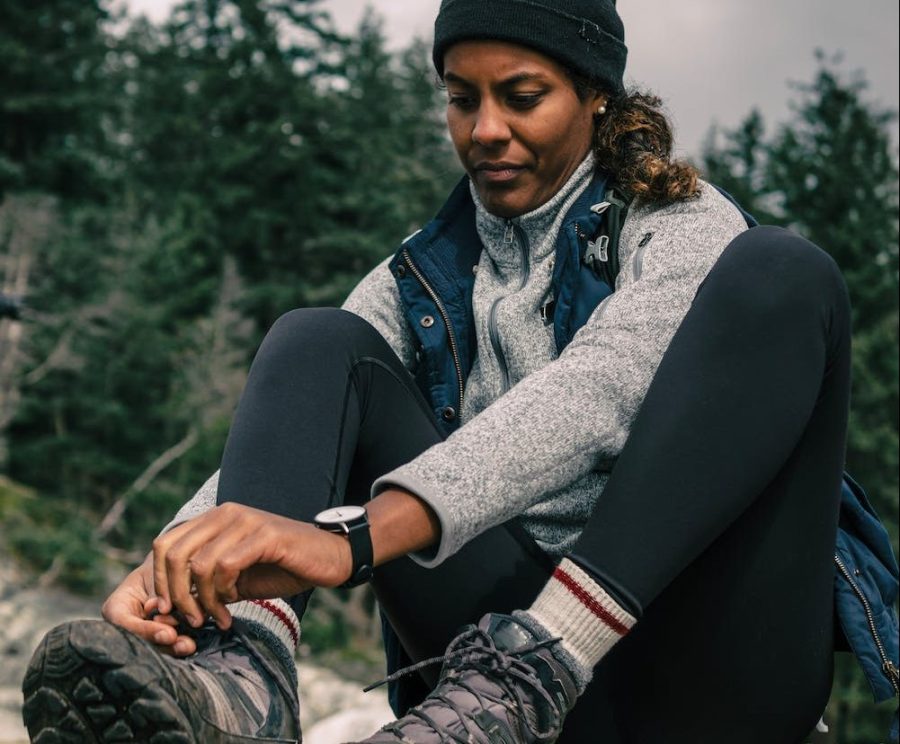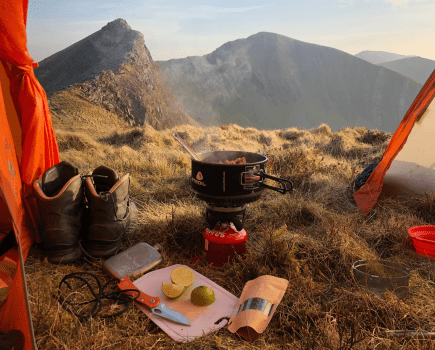Hiking socks may seem unimportant in the grand scheme of your outdoor kit list. But considering your feet are doing the lion’s share of the work on the trail, it’s only right you give them the TLC they deserve with the right size hiking sock. Here, we’ll guide you through the factors to consider when selecting a sock to suit any adventure.
Main image credit: PNW Productions
How to choose the right size hiking socks
There are four main areas of concern when choosing the right size hiking sock, alongside choosing the specific style of sock.
Materials
Some fabrics have less give. While wool and merino wool are popular materials for hiking socks due to natural sweat-wicking and odour control qualities, they don’t always offer a lot of stretch. Many brands – such as Darn Tough – now offer their own blends of wool and synthetic materials such as lycra or elastane, which give a bit more stretch and will help the sock fit and mould to your foot.
You can learn more about the best materials for hiking socks from our content editor, Will Renwick, who has also pondered the question of whether merino wool hiking socks are really worth the investment so you don’t have to.
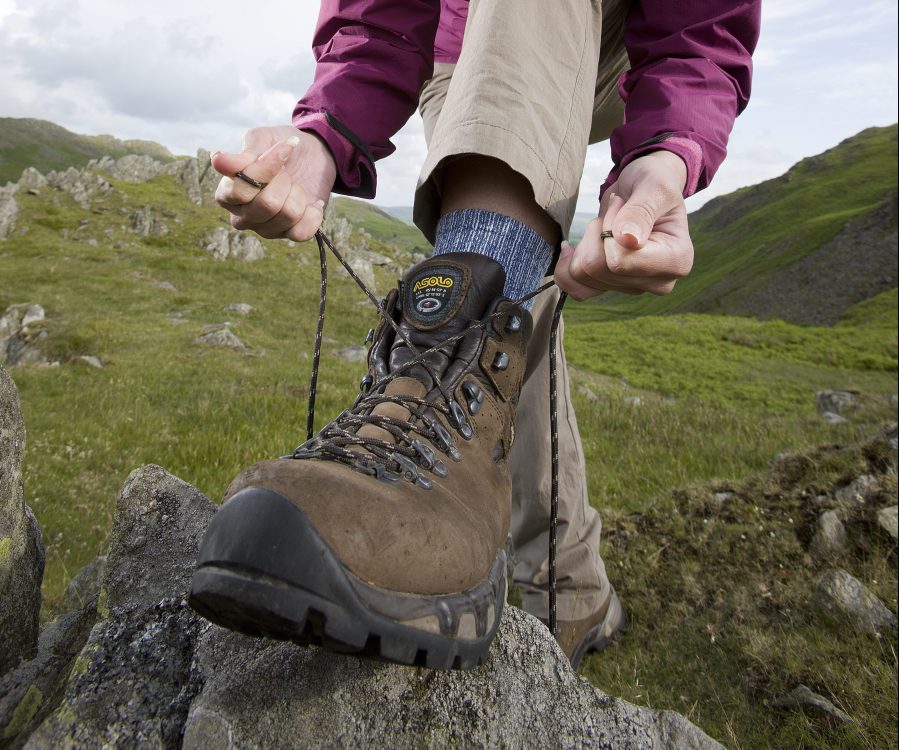
A walker tying up boot laces in Lakeland. Credit: Tony West
Length
There are four primary sock lengths – or heights, if you prefer – and each is designed for a different outdoor purpose.
1. No-show
These short socks are sometimes called no-shows because they aren’t long enough to peep above the cut of most hiking boots. They are ideal for warm weather conditions when you’re wearing a light trail runner or low-cut shoe and shouldn’t be worn with boots as they give no protection around the ankle or calf from rubbing.
2. Ankle
No prizes for guessing here. Ankle socks hit just above your ankle bone and are ideal for warm, dry days when the terrain still requires you to wear protective mid-cut shoes or boots.
3. Crew
A happy medium for colder seasons, these should generally hit just below the middle of your calf. They are the most popular hiking sock choice for three-season use as they offer extra protection and cushioning from rubbing if your boots have a high cuff. Depending on the materials, they can be relatively lightweight and breathable while offering warmth for the lower part of your shins.
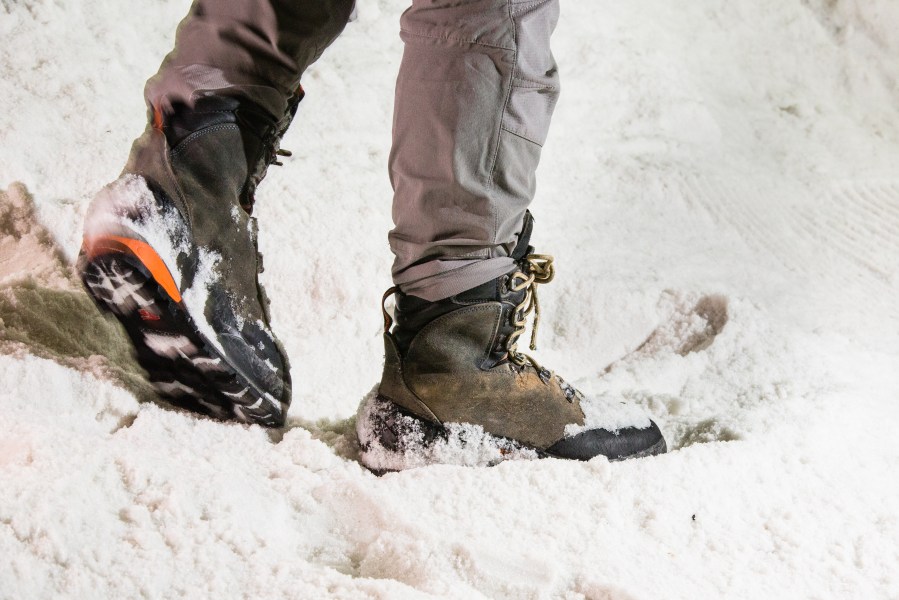
Walking in a winter wonderland. Credit: Dougie Cunningham
4. Knee
Ideal for mountaineering in cold climes, knee-length socks will protect you from rubbing when wearing tall mountaineering boots and will also keep your lower leg warmer in knee-deep snow and cold weather conditions.
Cushioning
Cushioning is vital in hiking socks – it’s one of the reasons we don’t recommend hiking in your everyday wear socks. They just don’t cut the cushioning mustard.
Ideally, cushioning will be focussed on hot spots for rubbing such as your ankle, heel, and ball of your foot. As everyone’s feet are different, the cushioning to warmth ratio you choose should suit your body and how it reacts to the specific activity you’ll be doing. For example, you’ll likely want to avoid heavy cushioning which will increase heat insulation if you’re running in warm weather as this will increase perspiration and cause dampness and discomfort.
Cushioning is also important when choosing the right size hiking sock. You should ensure your hiking boots have enough wiggle room to account for thicker socks with heavy cushioning as well as the natural swelling of your feet over the course of hours on the trail.
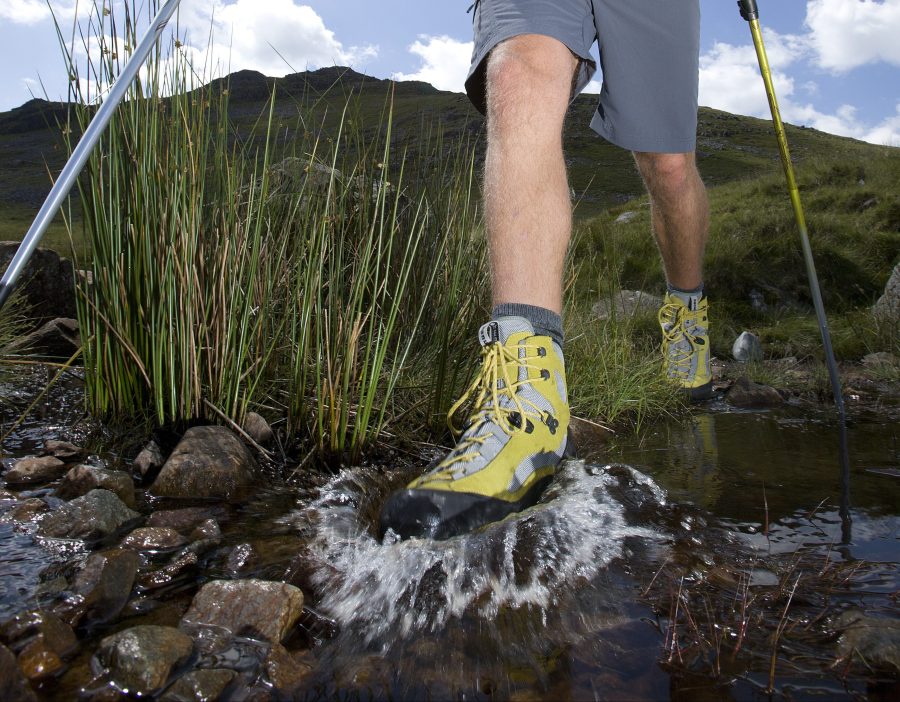
Splashing through Lakeland bog. Credit: Tony West
Finding the right size hiking socks for you
Last but by no means least, you’ll need to consider your usual shoe and sock size when finding the right fit for you. Some outdoor shops such as Cotswold Outdoor offers an in-store measuring service and there are fitting services offered by specialists such as Whalley Warm & Dry if you are unsure. But a good rule of thumb – or toe – is to stick to the sizing you’d wear everyday.
Most socks, especially those with stretch, are only sold in size categories encompassing a few different shoe sizes. For example, the Lorpen T3 Light Hiker Eco Socks come in women’s and men’s sizes ranging from small to extra large covering UK sizes 3 to 15 (or European sizes of 35 to 50). A lot of brands, such as Smartwool, split sizes across two to three shoe sizes.
You’ll need to consult the relevant size guide and guidelines for the sock in question to see whether they run true to size or whether you’ll need to size up or down. If you’re looking for compression socks, you’ll also need to have your calf measurements to hand.
Read more: What is the difference between trail shoes and hiking shoes?

